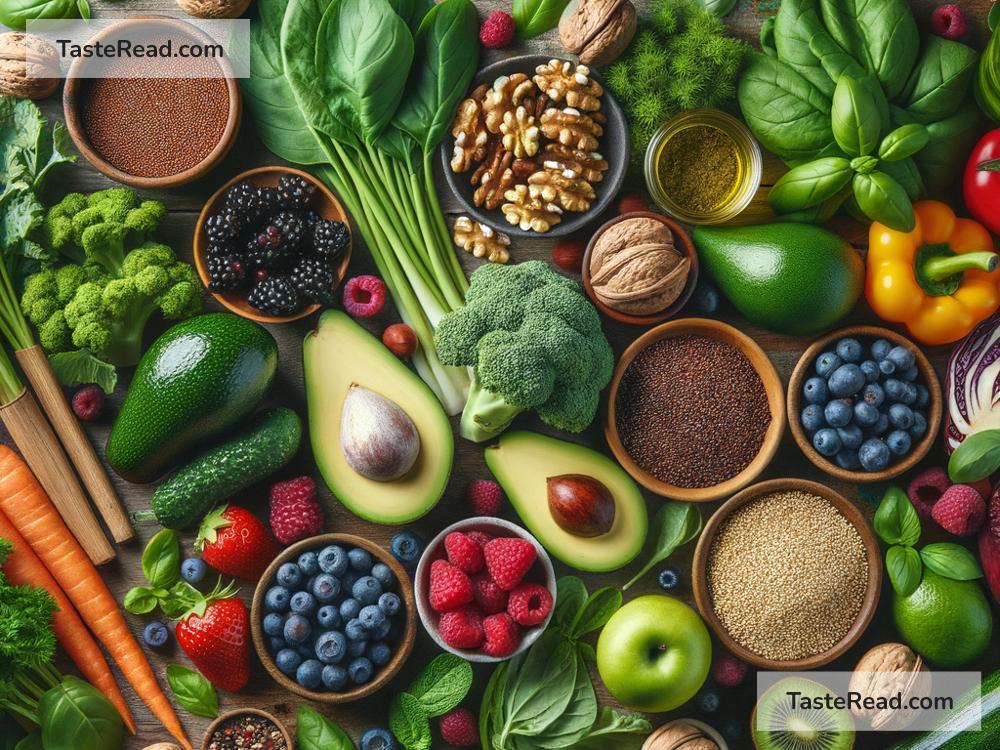Foods for Reducing Insulin Resistance: Simple Steps to Better Health
Insulin resistance is a condition where the body’s cells don’t respond properly to insulin, a hormone that helps move sugar from your blood into your cells to be used for energy. When this happens, blood sugar levels remain high, which can lead to type 2 diabetes over time. The good news is that altering your diet can play a big role in reducing insulin resistance and improving your overall health. This blog will guide you through some of the best foods to eat if you want to lower insulin resistance—explained in simple, easy-to-understand terms.
What Causes Insulin Resistance?
Before jumping into food lists, let’s understand what causes insulin resistance. It’s often linked to factors like excess weight (especially fat around the belly), physical inactivity, poor diet (high in sugar and refined carbs), and genetics. Stress, lack of sleep, and certain medical conditions can also contribute to this issue.
Luckily, making better food choices can help reverse insulin resistance or prevent it from becoming worse.
Best Foods for Reducing Insulin Resistance
These foods are packed with nutrients that can improve your body’s ability to use insulin, lower blood sugar levels, and reduce inflammation.
1. Non-Starchy Vegetables
Non-starchy vegetables are low in carbs and calories, making them ideal for stabilizing your blood sugar. They’re also rich in fiber, which slows down sugar absorption and prevents blood sugar spikes.
Examples of non-starchy veggies:
– Broccoli
– Spinach
– Kale
– Cauliflower
– Zucchini
– Bell peppers
– Brussels sprouts
Add these veggies to salads, soups, or roasted meals. Aim to fill half of your plate with vegetables at every meal.
2. Whole Grains
Unlike refined grains (like white bread or rice), whole grains are slower to digest because they contain fiber and valuable nutrients. They’re better for controlling blood sugar and improving insulin sensitivity.
Some great whole-grain options include:
– Quinoa
– Brown rice
– Oats
– Barley
– Buckwheat
Try swapping out white bread for whole-grain bread or white rice for brown rice in your meals.
3. Healthy Fats
Healthy fats don’t spike blood sugar, and they help reduce inflammation in the body, which can improve insulin sensitivity. Fats also help keep you feeling full for longer, preventing overeating.
Sources of healthy fats:
– Avocados
– Nuts (almonds, walnuts, pistachios)
– Seeds (chia seeds, flaxseeds, sunflower seeds)
– Olive oil
– Fatty fish (salmon, mackerel, sardines)
Make a healthy salad dressing with olive oil and lemon or snack on a handful of nuts when you’re hungry.
4. Lean Proteins
Protein is crucial for keeping your body fueled and building muscle. Lean protein doesn’t cause blood sugar spikes, making it a great choice for those aiming to reduce insulin resistance.
Examples of lean proteins:
– Chicken breast
– Turkey
– Eggs
– Fish (like cod or tilapia)
– Low-fat yogurt
– Tofu or tempeh (plant-based proteins)
Try baking or grilling your protein rather than frying it to keep meals as healthy as possible.
5. Legumes
Legumes are packed with fiber, protein, and complex carbs, which digest slowly and prevent blood sugar spikes. They’re also inexpensive and easy to add to meals.
Examples of legumes:
– Chickpeas
– Lentils
– Black beans
– Kidney beans
– Peas
Use legumes in soups, salads, chili, or even an easy hummus dip.
6. Berries
Berries are nature’s sweet treat, but unlike sugary snacks, they’re low in sugar and packed with antioxidants. Antioxidants combat inflammation and improve insulin sensitivity.
Best berries for insulin resistance:
– Blueberries
– Strawberries
– Raspberries
– Blackberries
Eat berries as a snack, mix them with yogurt, or blend them into a smoothie.
7. Spices
Certain spices have been shown to help with blood sugar control and insulin sensitivity. Not only do they make your food tastier, but they also add surprising health benefits!
Helpful spices include:
– Cinnamon (may lower blood sugar levels)
– Turmeric (reduces inflammation)
– Ginger (aids in digestion and insulin function)
Add cinnamon to your morning oatmeal or sprinkle turmeric into your soups and stir-fries.
8. Fermented Foods
Fermented foods contain probiotics, which improve gut health. A healthy gut might positively impact insulin resistance by reducing inflammation and improving sugar metabolism.
Fermented foods to try:
– Yogurt (choose unsweetened)
– Kefir
– Sauerkraut
– Kimchi
– Miso
Include a serving of fermented food daily to boost gut health.
Foods to Avoid
While we focused on healthy foods to add, it’s equally important to know what to limit or avoid:
– Sugary drinks (soda, sweetened teas, energy drinks)
– Processed snacks (chips, packaged sweets)
– Refined carbs (white bread, pastries, white pasta)
– Fried or overly fatty foods
– High-sugar desserts
These foods can spike your blood sugar and worsen insulin resistance over time.
Simple Tips for Success
- Eat Balanced Meals: Combine healthy carbs, fats, and proteins at every meal to keep your blood sugar stable.
- Get Active: Exercise helps your body become more sensitive to insulin; even a daily 30-minute walk can make a difference.
- Stay Hydrated: Drink plenty of water throughout the day to keep your body functioning well.
- Plan Ahead: Prepare healthy meals and snacks in advance so you don’t rely on processed or unhealthy foods.
Final Thoughts
Reducing insulin resistance doesn’t happen overnight, but making smart food choices is one of the best places to start. Incorporating non-starchy vegetables, whole grains, healthy fats, lean proteins, berries, and spices into your diet can help your body respond better to insulin. Pair these changes with regular physical activity, proper sleep, and stress management to maximize your progress.
With the right foods and simple lifestyle tweaks, you’ll be well on your way to improving your health, stabilizing your blood sugar, and reducing your risk of diabetes. Remember, small changes can lead to big results over time!


